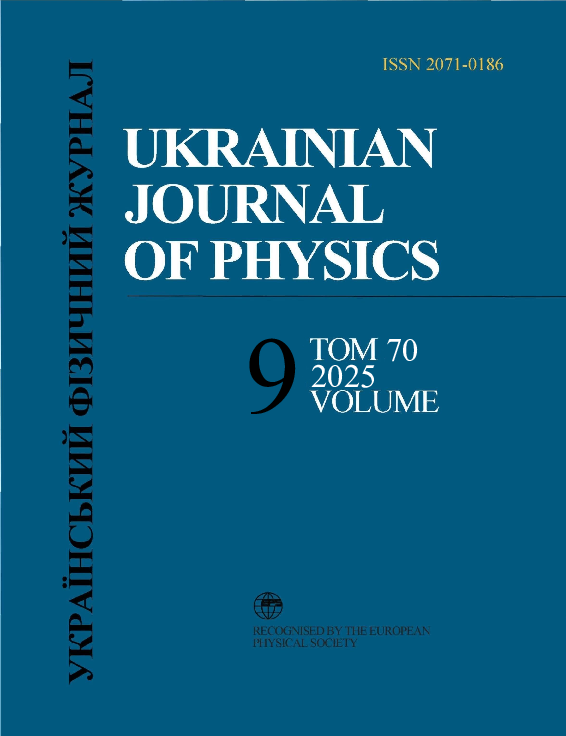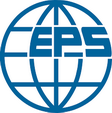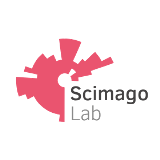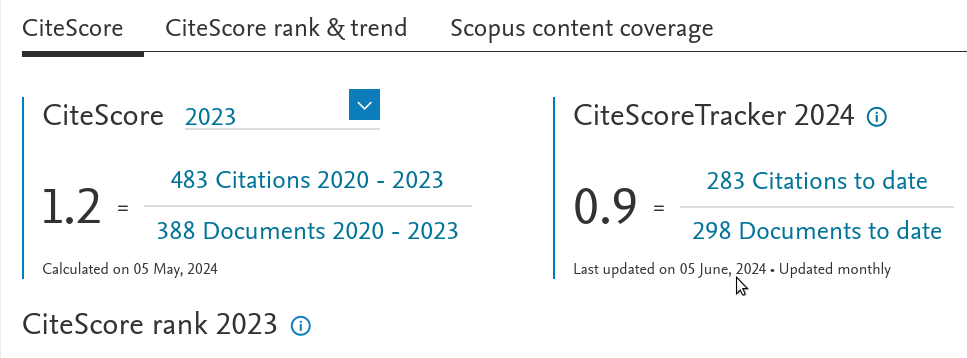Auger Recombination in Polar InGa/GaN Quantum Wells
DOI:
https://doi.org/10.15407/ujpe70.9.620Keywords:
InGaN quantum wells, Auger recombination, polarizationAbstract
Auger recombination rate in polar InxGa1−xN/GaN quantum wells has been calculated in the framework of the full-band model. The key components of the model are the band structures of bulk binary nitrides (GaN and InN) obtained by the empirical pseudopotential method and the band structures of InxGa1−xN/GaN quantum wells (with various alloy compositions x) obtained by the linear combination of bulk bands. The dependence of the Auger recombination coefficients on the band gap, quantum well thickness, and carrier concentration has been calculated. The results obtained show that the band-gap dependences of the Auger coefficients for quantum wells are much weaker than in the case of bulk InxGa1−xN alloys. The dependence of the Auger coefficients on the quantum well width has a strong oscillatory character. At high carrier concentrations, a significant decrease in the Auger coefficients is observed, which we attribute to the influence of the Fermi statistics on the carrier population distribution over the quantum states.
References
1. J. Iveland, L. Martinelli, J. Peretti, J. S. Speck, C. Weisbuch. Direct measurement of Auger electrons emitted from a semiconductor light-emitting diode under electrical injection: Identification of the dominant mechanism for efficiency droop. Phys. Rev. Lett. 110, 177406 (2013).
https://doi.org/10.1103/PhysRevLett.110.177406
2. M. Binder, B. Galler, M. Furitsch, J. Off, J. Wagner, R. Zeisel, S. Katz. Investigations on correlation between I-V characteristic and internal quantum efficiency of blue (AlGaIn)N light-emitting diodes. Appl. Phys. Lett. 103, 221110 (2013).
https://doi.org/10.1063/1.4833895
3. D.J. Myers, A.C. Espenlaub, K. Gelzinyte, E.C. Young, L. Martinelli, J. Peretti, C. Weisbuch, J.S. Speck. Evidence for trap-assisted Auger recombination in MBE grown InGaN quantum wells by electron emission spectroscopy. Appl. Phys. Lett. 116, 091102 (2020).
https://doi.org/10.1063/1.5125605
4. A. David, M.J. Grundmann. Droop in InGaN lightemitting diodes: A differential carrier lifetime analysis. Appl. Phys. Lett. 96, 103504 (2010).
https://doi.org/10.1063/1.3330870
5. B. Galler, P. Drechsel, R. Monnard, P. Rode, P. Stauss, S. Froehlich, W. Bergbauer, M. Binder, M. Sabathil, B. Hahn, J. Wagner. Influence of indium content and temperature on Auger-like recombination in InGaN quantum wells grown on (111) silicon substrates. Appl. Phys. Lett. 101, 131111 (2012).
https://doi.org/10.1063/1.4754688
6. A. David, N.G. Young, Ch.A. Hurni, M.D. Craven. Alloptical measurements of carrier dynamics in bulk-GaN LEDs: Beyond the ABC approximation. Appl. Phys. Lett. 110, 253504 (2017).
https://doi.org/10.1063/1.4986908
7. F. Nippert, S.Yu. Karpov, G. Callsen, B. Galler, Th. Kure, C. Nenstiel, M.R. Wagner, M. Strasburg, H.-J. Lugauer, A. Hoffmann. Temperature-dependent recombination coefficients in InGaN light-emitting diodes: Hole localization, Auger processes, and the green gap. Appl. Phys. Lett. 109, 161103 (2016).
https://doi.org/10.1063/1.4965298
8. J. Piprek, F. Romer, B. Witzigmann. On the uncertainty of the Auger recombination coefficient extracted from InGaN/GaN light emitting diode efficiency droop measurements. Appl. Phys. Lett. 106, 101101 (2015).
https://doi.org/10.1063/1.4914833
9. K.T. Delaney, P. Rinke, C.G. Van de Walle. Auger recombination rates in nitrides from first principles. Appl. Phys. Lett. 94, 191109 (2009).
https://doi.org/10.1063/1.3133359
10. F. Bertazzi, M. Goano, E. Bellotti. A numerical study of Auger recombination in bulk InGaN. Appl. Phys. Lett. 97, 231118, (2010).
https://doi.org/10.1063/1.3525605
11. F. Bertazzi, M. Goano, E. Bellotti. Numerical analysis of indirect Auger transitions in InGaN. Appl. Phys. Lett. 101, 011111 (2012).
https://doi.org/10.1063/1.4733353
12. E. Kioupakis, P. Rinke, K.T. Delaney, C.G. Van de Walle. Indirect Auger recombination as a cause of efficiency droop in nitride light-emitting diodes. Appl. Phys. Lett. 98, 161107 (2011).
https://doi.org/10.1063/1.3570656
13. E. Kioupakis, D. Steiauf, P. Rinke, K.T. Delaney, C.G. Van de Walle. First-principles calculations of indirect Auger recombination in nitride semiconductors. Phys. Rev. B 92, 035207 (2015).
https://doi.org/10.1103/PhysRevB.92.035207
14. A.V. Zinovchuk, A.M. Gryschuk. Alloy-assisted Auger recombination in InGaN. Opt. Quant. Electron. 50, 455 (2018).
https://doi.org/10.1007/s11082-018-1704-9
15. F. Bernardini, V. Fiorentini. Spontaneous versus piezoelectric polarization in III-V nitrides: Conceptual aspects and practical consequences. Phys. Stat. Sol. B 216, 391 (1999).
https://doi.org/10.1002/(SICI)1521-3951(199911)216:1<391::AID-PSSB391>3.0.CO;2-K
16. J. Hader, J.V. Moloney, B. Pasenow, S.W. Koch, M. Sabathil, N. Linder, S. Lutgen. On the importance of radiative and Auger losses in GaN-based quantum wells. Appl. Phys. Lett. 87, 201112 (2005).
17. R. Vaxenburg, A. Rodina, E. Lifshitz, A.L. Efros. The role of polarization fields in Auger-induced efficiency droop in nitride-based light-emitting diodes. Appl. Phys. Lett. 103, 221111 (2013).
https://doi.org/10.1063/1.4833915
18. R. Vaxenburg, E. Lifshitz, and A.L. Efros. Suppression of Auger-stimulated efficiency droop in nitride-based light emitting diodes. Appl. Phys. Lett. 102, 031120 (2013).
https://doi.org/10.1063/1.4789364
19. F. Bertazzi, X. Zhou, M. Goano, G. Ghione, E. Bellotti. Auger recombination in InGaN/GaN quantum wells: A full-Brillouin-zone study. Appl. Phys. Lett. 103, 081106 (2013).
https://doi.org/10.1063/1.4819129
20. J.M. McMahon, E. Kioupakis, S. Schulz. Atomistic analysis of Auger recombination in c-plain (In,Ga)N/GaN quantum wells: Temperature-dependent competition between radiative and nonradiative recombination. Phys. Rev. B 105, 195307 (2022).
https://doi.org/10.1103/PhysRevB.105.195307
21. D. Iida, Z. Zhuang, P. Kirilenko, M. Velazquez-Rizo, M.A. Najmi, K. Ohkawa. 633-nm InGaN-based red LEDs grown on thick underlying GaN layers with reduced in-plane residual stress. Appl. Phys. Lett. 116, 162101 (2020).
https://doi.org/10.1063/1.5142538
22. D. Esseni, P. Palestri. Linear combination of bulk bands method for investigating the low-dimensional electron gas in nanostructured devices. Phys. Rev. B 72, 165342 (2005).
https://doi.org/10.1103/PhysRevB.72.165342
23. D. Vasileska, S.M. Goodnick, G. Klimeck. Computational Electronics: Semiclassical and Quantum Device Modeling and Simulation (CRC Press, 2010).
24. Z.H. Mahmood, A.P. Shah, A. Kadir, M.R. Gokhale, S. Ghosh, A. Bhattacharya, B.M. Arora. Determination of InNпїЅGaN heterostructure band offsets from internal photoemission measurements.Appl. Phys. Lett. 91, 152108 (2007).
https://doi.org/10.1063/1.2794788
25. P.Y Prodhomme, A. Beya-Wakata, G. Bester. Nonlinear piezoelectricity in wurtzite semiconductors. Phys. Rev. B 88, 121304(R) (2013).
https://doi.org/10.1103/PhysRevB.88.121304
26. K .Adachi, H. Ogi, A. Nagakubo, N. Nakamura, M. Hirao, M. Imade, M. Yoshimura, Y. Mori. Elastic constants of GaN between 10 and 305 K. J. Appl. Phys. 119, 245111 (2016).
https://doi.org/10.1063/1.4955046
27. J. Serrano, A. Bosak, M. Krisch, F.J. Manjon, A.H. Romero, N. Garro, X. Wang, A. Yoshikawa, M. Kuball. InN thin film lattice dynamics by grazing incidence inelastic X-ray scattering. Phys. Rev. Lett. 106, 205501 (2011).
https://doi.org/10.1103/PhysRevLett.106.205501
28. O. Bonno, J.L. Thobel, F. Dessenne. Modeling of electronelectron scattering in Monte Carlo simulation of quantum cascade lasers. J. Appl. Phys. 97, 043702 (2005).
https://doi.org/10.1063/1.1840100
29. H. Haug S.W. Koch. Quantum Theory of the Optical and Electronic Properties of Semiconductors (World Scientific Publishing Co. Pte. Ltd., 2004).
30. A. David, N.G. Young, C. Lund, M.D. Craven. Reduction of efficiency droop in c-plane InGaN/GaN light-emitting diodes using a thick single quantum well with doped barriers. Appl. Phys. Lett. 115, 193502 (2019).
31. D. Schiavon, M. Binder, M. Peter, B. Galler, P. Drechsel, F. Scholz. Wavelength-dependent determination of the recombination rate coefficients in single-quantum-well GaInN/GaN light emitting diodes. Phys. Status Solidi B 250, 283 (2013).
https://doi.org/10.1002/pssb.201248286
32. T.H. Ngo, B. Gil, B. Damilano, K. Lekhal, P. De Mierry. Internal quantum efficiency and Auger recombination in green, yellow and red InGaN-based light emitters grown along the polar direction. Superlatt. Microstruct. 2103, 245 (2017).
https://doi.org/10.1016/j.spmi.2017.01.026
33. C. Smith, R.A. Abram, M.G. Burt. Theory of Auger recombination in a quantum well heterostructure. Superlatt. Microstruct. 1, 119 (1985).
https://doi.org/10.1016/0749-6036(85)90105-3
34. R.I. Taylor, R.A. Abramz, M.G. Burt, C. Smith. A detailed study of Auger recombination in 1.3μm InGaAsP/InP quantum wells and quantum well wires. Semicond. Sci. Technol. 5, 90 (1990).
https://doi.org/10.1088/0268-1242/5/1/013
35. G.E. Cragg, A.L. Efros. Suppression of Auger processes in confined structures. Nano Lett. 10, 313 (2010).
Downloads
Published
How to Cite
Issue
Section
License
Copyright Agreement
License to Publish the Paper
Kyiv, Ukraine
The corresponding author and the co-authors (hereon referred to as the Author(s)) of the paper being submitted to the Ukrainian Journal of Physics (hereon referred to as the Paper) from one side and the Bogolyubov Institute for Theoretical Physics, National Academy of Sciences of Ukraine, represented by its Director (hereon referred to as the Publisher) from the other side have come to the following Agreement:
1. Subject of the Agreement.
The Author(s) grant(s) the Publisher the free non-exclusive right to use the Paper (of scientific, technical, or any other content) according to the terms and conditions defined by this Agreement.
2. The ways of using the Paper.
2.1. The Author(s) grant(s) the Publisher the right to use the Paper as follows.
2.1.1. To publish the Paper in the Ukrainian Journal of Physics (hereon referred to as the Journal) in original language and translated into English (the copy of the Paper approved by the Author(s) and the Publisher and accepted for publication is a constitutive part of this License Agreement).
2.1.2. To edit, adapt, and correct the Paper by approval of the Author(s).
2.1.3. To translate the Paper in the case when the Paper is written in a language different from that adopted in the Journal.
2.2. If the Author(s) has(ve) an intent to use the Paper in any other way, e.g., to publish the translated version of the Paper (except for the case defined by Section 2.1.3 of this Agreement), to post the full Paper or any its part on the web, to publish the Paper in any other editions, to include the Paper or any its part in other collections, anthologies, encyclopaedias, etc., the Author(s) should get a written permission from the Publisher.
3. License territory.
The Author(s) grant(s) the Publisher the right to use the Paper as regulated by sections 2.1.1–2.1.3 of this Agreement on the territory of Ukraine and to distribute the Paper as indispensable part of the Journal on the territory of Ukraine and other countries by means of subscription, sales, and free transfer to a third party.
4. Duration.
4.1. This Agreement is valid starting from the date of signature and acts for the entire period of the existence of the Journal.
5. Loyalty.
5.1. The Author(s) warrant(s) the Publisher that:
– he/she is the true author (co-author) of the Paper;
– copyright on the Paper was not transferred to any other party;
– the Paper has never been published before and will not be published in any other media before it is published by the Publisher (see also section 2.2);
– the Author(s) do(es) not violate any intellectual property right of other parties. If the Paper includes some materials of other parties, except for citations whose length is regulated by the scientific, informational, or critical character of the Paper, the use of such materials is in compliance with the regulations of the international law and the law of Ukraine.
6. Requisites and signatures of the Parties.
Publisher: Bogolyubov Institute for Theoretical Physics, National Academy of Sciences of Ukraine.
Address: Ukraine, Kyiv, Metrolohichna Str. 14-b.
Author: Electronic signature on behalf and with endorsement of all co-authors.













